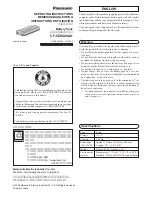
Selection of differential circuit breaker:
Each charging station must be connected to a
separate differential circuit breaker. Other current
circuits cannot be connected to this differential
circuit breaker. A suitable rated current IN must be
selected for the set circuit breaker.
Sizing of the head-end thermal magnetic
switch:
The increase of the ambient temperature in the
control cabinet must also be taken into
consideration for the sizing of the thermal
circuit breaker. Calculate the rated current
according to the chosen charging power and
the supply line.
Sizing of overvoltage devices:
If national legislation requires it, the installation
of an overvoltage device must be designed
according to the maximum intensity of the
charging station.
Determine the rated current according to the
data on the nameplate in compliance with the
selected load capacity and the supply line.
Sizing of the power supply line:
When designing the installation, do it according
to current state regulations. If the cable is
exposed to high temperatures take into account
the temperatures that it can suffer inside the
charging point. Select the cable of sufficient
section for the chosen automatic switch.
Disconnection device:
The Charging Station hasn no power switch
available. The differential switch and the
magneto-thermal switch of the power supply
line operate as a mains connection device. The
Charging Point can always be turned on and will
only be switched off if it isn't used very often.
to prevent reduction of the charging current or interruption of the charging due to excessive
temperatures of the charging station components.
• Do not install the charging station in places where objects could fall and damage the
equipment. If you think that a vehicle may hit the charging station, install protective barriers.
• Do not subject the equipment to direct water jets (e.g. due to the proximity to car wash
stations or high-pressure cleaners).
Observe the internationally valid installation standards (e.g. IEC 60364-1 and IEC 60364-5-52)
and comply with the nationally applicable installation standards and regulations.
6.2 INSTRUCTIONS FOR ELECTRICAL CONNECTION
9






























